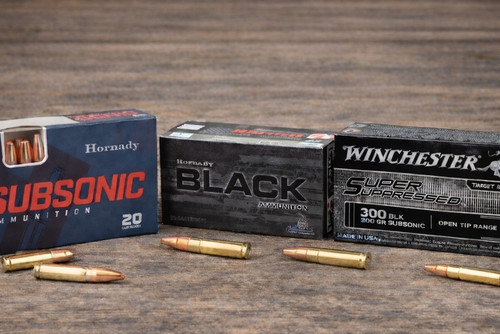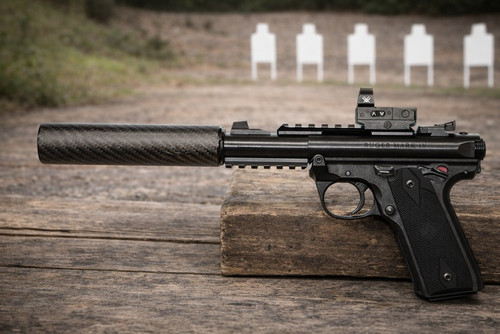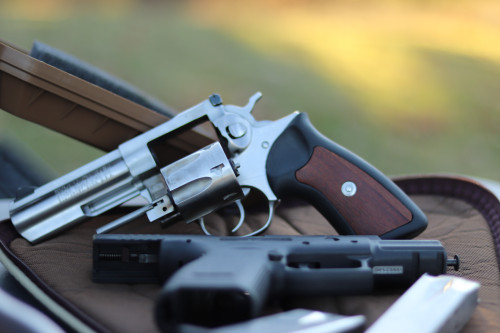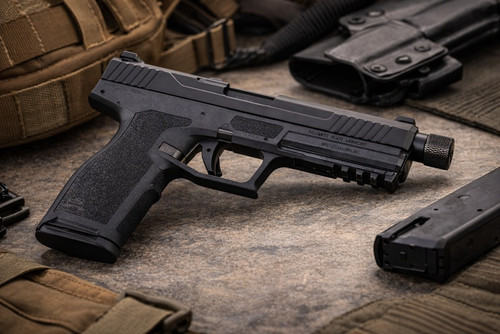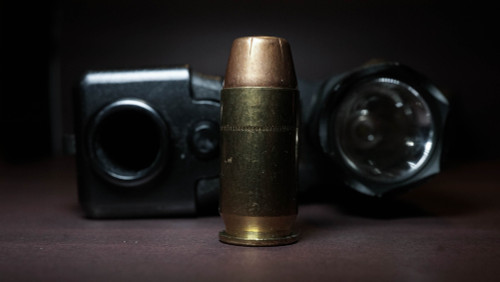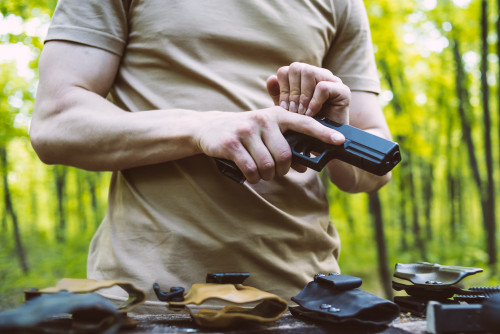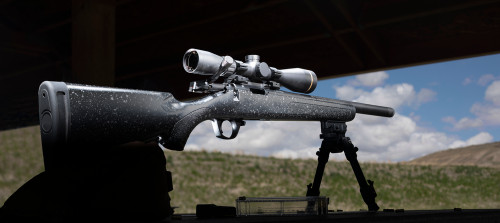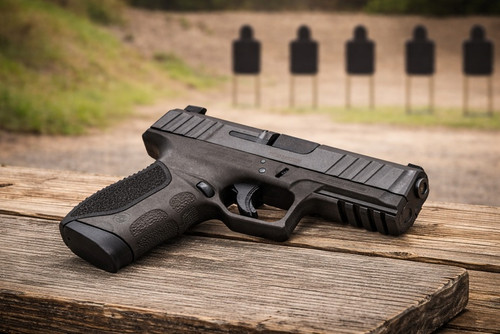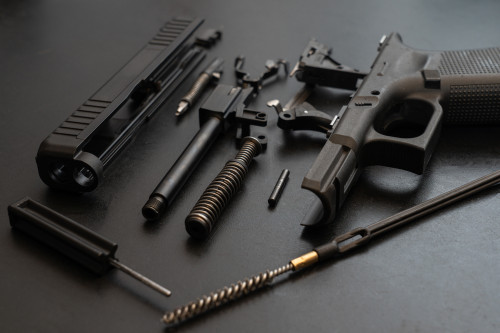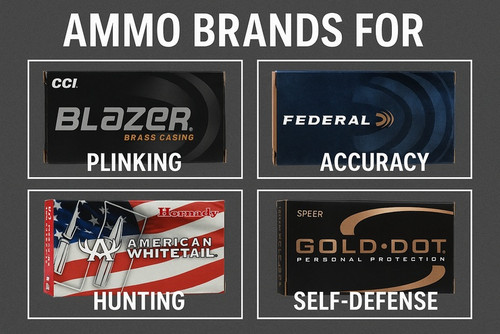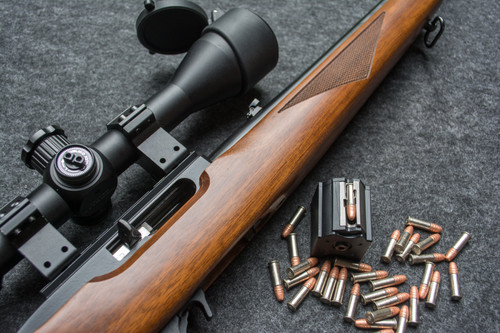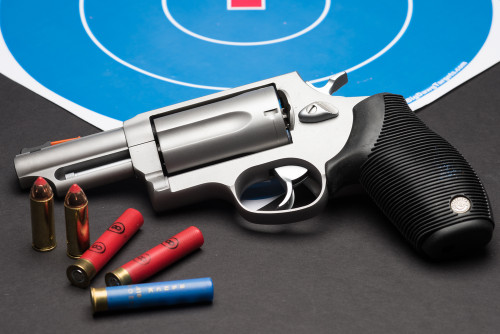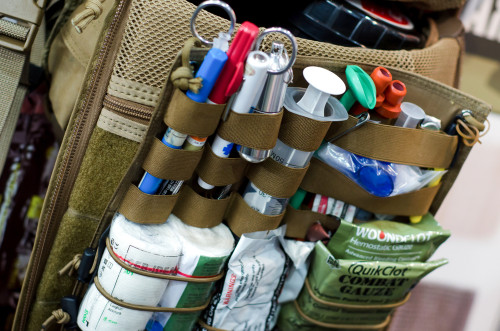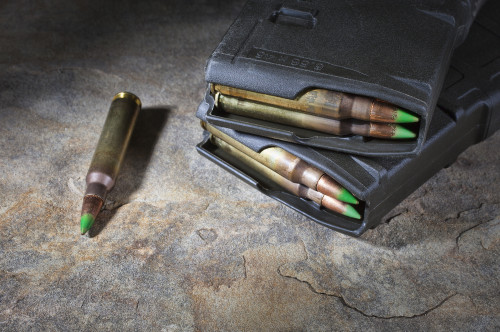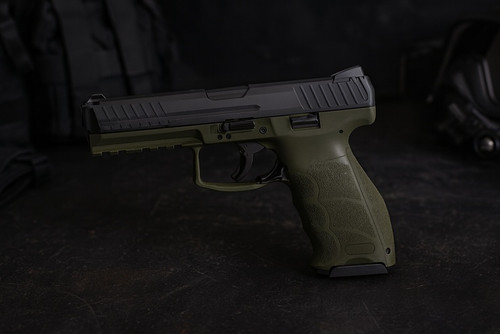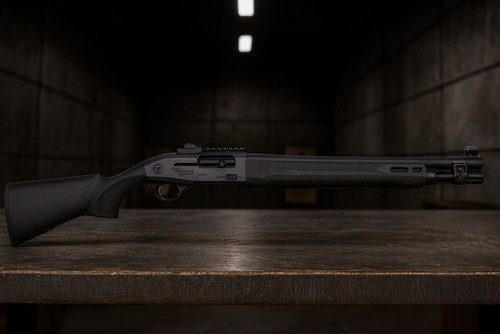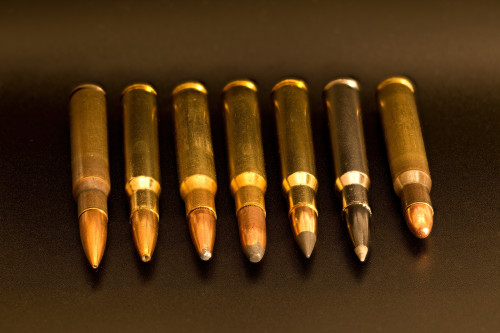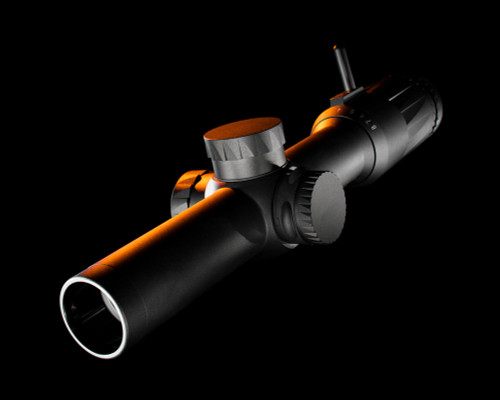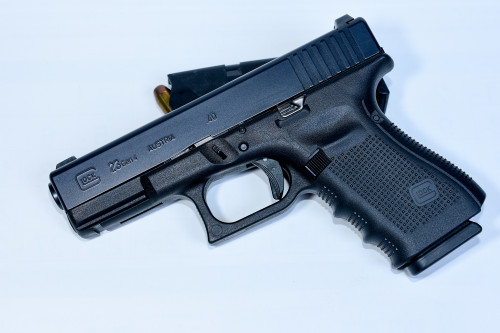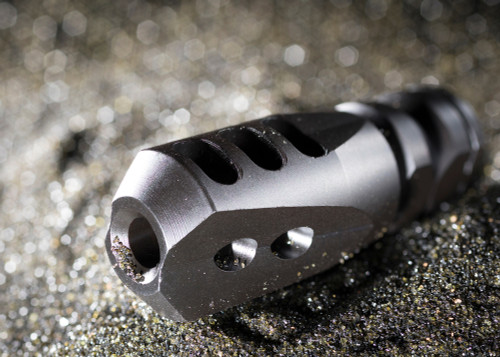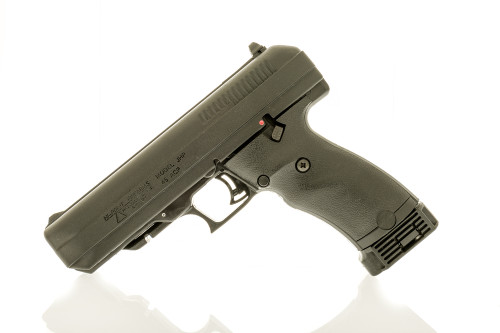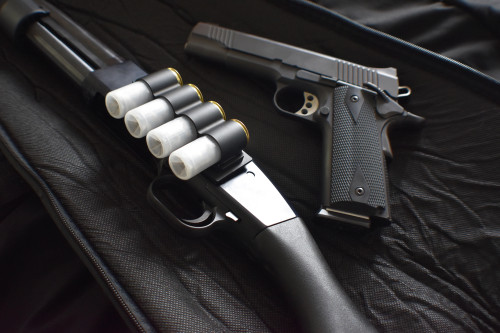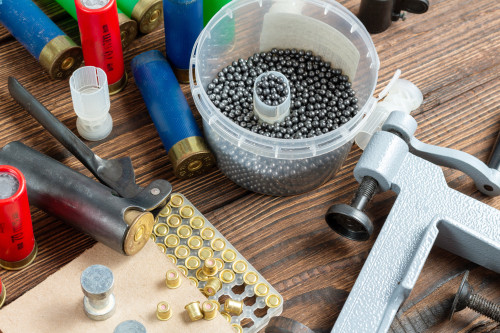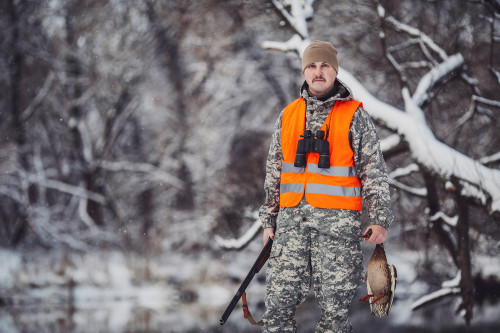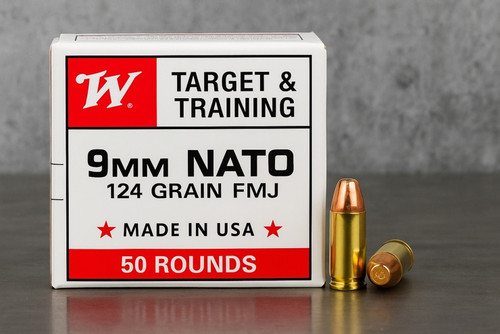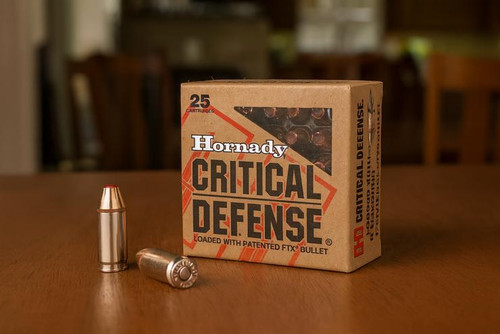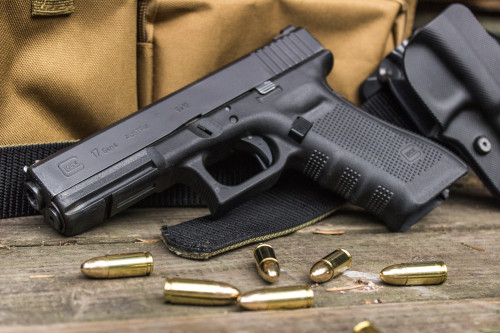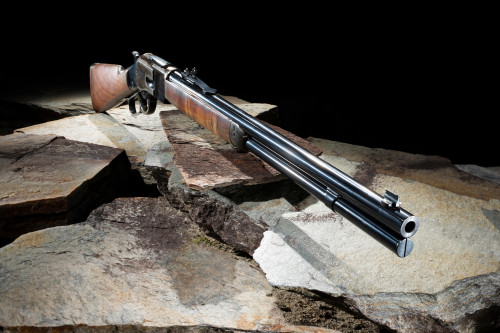Someone once said about the shotgun, “It rips meat from bone.”
That might've even been a politician. It might have been somebody’s weird uncle. Regardless of who first uttered it, this phrase squarely falls into the category of “head-scratching, stupid, and patently false tropes about firearms.”
To be fair, a shotgun is supremely capable in a self-defense role — but let’s not get carried away. All types of shotguns have their strengths and limitations. Whether you’re defending your home, going hunting, or enjoying a day at the range, there's a shotgun that will work for that occasion (and a list of others that won’t).
From the reliable pump-action to the swift semi-automatic, each type has its unique features and advantages. Let's take an objective look at the different kinds of shotguns, what they’re good at, and why you might need one (or more) of each.
What Is a Shotgun?
To start, it’s worth defining what constitutes a shotgun.
Basically, a shotgun is a firearm designed to fire a spread of pellets (called “shot”) or a single slug — not a traditional bullet. It can also be called a scattergun because it scatters stuff when the trigger is pulled. The versatility and power of a shotgun makes it ideal for hunting birds, shooting clays, and close-range defense.
Most often, shotgun ammo is made of lead, steel, tungsten, or a concoction thereof. For instance, shooting lead is outlawed when duck hunting, and tungsten is preferred these days because it retains more downrange energy than lead anyway. However, lead still rules the roost on sporting clay ranges.
(Source: https://www.hunter-ed.com/pennsylvania/studyGuide/A-Shotgun-s-Gauge/20103901_88442/)
Gauging Interest
Shotguns (with one exception) are measured in gauge. Gauge is a weird measurement that refers to how many lead balls (which fit the diameter of the bore) it will take to equal one pound.
For example, if you’re measuring lead balls the size of a 12-gauge, it will take 12 of them to equal a pound. That’s because it’s a larger bore. However, if you’re looking at lead balls the size of a 20-gauge, it will take 20 of them to equal a pound. It’s a smaller bore, so it would take more lead balls to equal a pound. The exception is the .410, which is measured by the diameter of the bore itself (which is .41”).
Today, shotgun gauge is a bit of a strange measurement, since we’re not typically firing whole lead balls. But this is a standard now for shotgun barrels, and shell sizes are commonly understood among shooters. Just match the ammo you’re buying to the gauge, and you’ll be fine.
In order from largest to smallest, the most common gauges are:
- 10 Gauge
- 12 Gauge
- 16 Gauge
- 20 Gauge
- 28 Gauge
- .410 Bore
Within each shell is the shot, which generally runs from No. 9 (itsy bitsy) to the various buckshots. In an average sized No. 9 shell, there are roughly 648 pellets. That’s tiny. In a 00 buck shell, there are only 9 pellets. Then there are slugs, which are a single projectile (still not a “bullet” per se) that equal the bore diameter. That’s quite a range, and makes shotguns so versatile.
Smooth Operator
Most shotguns are smoothbore, which simply means there’s nothing inside the barrel (like rifling) to impart twist to the projectiles. Pellets will fly without the advantage of accurizing rifling, but they can’t use it because of the mayhem of mixing and shuffling in the bore before being constricted at the end by a choke. This is a feature, not a bug. Shooting birds with a rifle is infinitely more difficult than with a shotgun — and also illegal for the most part. You want the forgiving spread (or pattern, as it’s called) of a shotgun when shooting things that are flying (or running) away from you.
Chokes offer various levels of constriction that make the shot fly tighter or wider. The range runs from “cylinder” bore (which has no choke and gives you the maximum spread of pellets) to “improved,” then “modified,” and finally, “full.” There are other wacky turkey chokes like “extra full,” but they’re a specialty and are really only good for long-range gobbler blasting.
Slugs, as mentioned earlier, are solid chunks of lead. You generally want a cylinder bore or (ideally) a rifled barrel to sling slugs. Rifling sets the slug to spinning in the barrel, which hugely increases its accuracy potential.
Now that we’ve got the meat-tearing basics under our belt, let’s take a closer look at the different types of shotguns.
Break Action Shotguns
A break action shotgun gets its name because you break the action open when you load or unload the gun. It’s what gentlemen carry and use afield. Over/under and side-by-side shotguns are break action.
Break action shotguns (especially over/unders) are great for sporting clays like trap and skeet, as well as for some bird hunting. Upland game hunters (think pheasant hunting) like an over/under shotgun because they seldom flush more than one or two birds — so you’ve got enough for one shot then another if you miss. Or if you’re really good, you can score a double, which is killing a bird with each of your shells.
Many quail hunters like using an over/under as well, even though multiple birds of this kind usually flush all at once. But you’re generally hunting quail with a partner or two as well, and you don’t wanna blast all the birds yourself.
Ever watch trap shooting in the Olympics? Every shooter uses an over/under. The barrels are stacked, which negates the need for the left/right compensation (crossover) necessary on side-by-sides. The best shooters in the world use them, so take that for what you will.
However, side-by-side shotguns, which have the barrels mounted next to one another, have a greater “cool” factor. If you’ve seen photos of Old West coach drivers, the guy in the passenger seat usually has a side-by-side along with other armament. It’s where the term “riding shotgun” came from. Side-by-sides are also good for upland bird shooters, and generally make better conversation pieces.
(Source: https://blog.cheaperthandirt.com/remington-870-pump-action-shotgun-classic/)
Pump Action Shotguns
These are the true workhorses of the shotgun world. No, the firearms world. They’re rugged and reliable, and are some of the cheapest guns around. They're also devastatingly effective in a variety of roles. Pump shotties are about as close to a do-all gun as there is. They can help defend the homestead, put meat in the pot, and hold their own at games like sporting clays.
As far as speed, pumps are between a single shot and an autoloader (semi-auto). They require you to manually rack the action to operate. It’s like pumping a Super Soaker, but just one pump is needed to shuck the empty hull and reload a fresh shell.
According to amazingly stupid internet lore, the sound of a pump action itself is apparently enough to scare off a burglar. But let’s be reasonable. Yes, the famous “shick-shick” is an iconic sound, but only a bonehead without two brain cells to rub together would leave the defense of his family to a sound.
That said, pump action shotguns do make great home defense shotguns. But their supreme reliability and ease of use make them the go-to for a lot of folks. Plus, no one’s doubting the devastation a 12-gauge load from a pump action can cause.
Pumps are also good for sporting clays and hunting. Whether you’re after a dove, quail, or pheasant, there’s a perfect pump gun available. With a rifled bore and a slug, pump guns are even competent deer and large-game takers. Although they’re not as popular as rifles, they’re a bit more common in some states where AR-15s are outlawed.
(Source: https://www.basspro.com/shop/en/benelli-m2-field-semi-auto-shotgun-10134616)
Semi-Auto Shotguns
Autoloaders up the firepower of a shotgun, but also the fickleness. Modern semi-autos are more reliable than those from 20 years ago, but the more moving parts a gun has, the greater the chance of something going wrong.
Despite this, many police departments and even some militaries use shotguns for certain situations. The ability to put more pellets/slugs on target in rapid succession outweighs the slim chance that the gun will malfunction. With a pump action, there’s always the chance that the operator may malfunction — but a semi-auto won’t forget what it was designed to do.
Autoloaders are also great for the field. For dove and quail and similar game, where multiple birds may flush, you want more than just two shots. Having the ability to quickly fire off more shots without manually reloading can make a big difference in filling out a bag limit or not.
Naturally, if a gun is good for game, it’s also good for games. Many trap and skeet shooters rely on semi-autos even if they’re limited in the number of shells they can fire. It’s best to use what you’re comfortable with, and with the proliferation of cheaper semi-autos, they work well for a lot of folks.
(Source: https://www.cimarron-firearms.com/1887-lever-action-shotgun-terminator-12-ga-20-barrel.html)
Lever Action Shotguns
Now we’re getting into the weedy ditch of lesser-known guns. Lever actions are most commonly associated with rifles and rimfires, but there are a few lever-action shotties around. They’re okay for home defense, hunting, and clays, but there is a better option for each of these applications from the categories we’ve already covered. These can almost be counted as novelties (or something for the guy who’s already got everything).
(Source: https://www.invaluable.com/auction-lot/sears-roebuck-12-gauge-bolt-action-shotgun-167-c-56448e8b0e)
Bolt Action Shotguns
If lever actions are an oddity, bolt-action shotguns are a geriatric freak show. They were more common decades ago, but they’re extremely rare these days. The perceived advantage, especially in the past when autoloaders were not very reliable, is that bolt-action shotguns offer a familiar action to those accustomed to bolt-action rifles while simultaneously carrying more firepower in the magazine than side-by-sides and over/unders. However, since many of us no longer use bolt-action rifles, at least one of these “advantages” is somewhat irrelevant.
But, like with lever-action shotguns, there are many other models of pump, semi-auto, and break-action guns that work better than a bolt-action shotgun. However, bolt-action shotguns are great conversation pieces.
Popular Shotgun Brands Shoguns
There are tons of shotguns out there, and they’re not all made equal. Some brands have been around for hundreds of years while others are just making inroads.
Remington
Remington is as old as the hills, and their solid reputation is well-deserved.
The company’s most popular models are the semi-auto Model 1100, its successor the 11-87, and the pump-action Model 870. The 1100 pioneered the good autoloader, and the 11-87 improves upon it. Meanwhile the 870 is still made in huge numbers today in a wealth of variants for hunting, home defense, and target shooting.
Winchester
Winchester made a handful of old-school bolt-action and pump-action shotguns, but they’re all antiques at this point. More modern Winchester shotguns, like the venerable Model 70 pump gun and SXP lineup of semi-auto hunting and defense guns, are proven and popular with hunters from coast to coast.
Benelli
Italian arms maker Benelli is most known for high-end over/unders for clays and hunting, but they also have a serious tactical side. The company’s autoloaders are revered for their solid reliability and generous capacity, while the over/unders are top-tier quality and made for a variety of circumstances and uses.
Beretta
Beretta is the most well-known Italian gunmaker and has been around since 1526 (that’s no typo). Needless to say, they know a thing or two about making firearms. They’re famous these days for their A300 and A400 lineup of hunting shotguns, and the 1301 Tactical series of autoloaders. All are more than adequate for whatever you can throw at them in the field or on the range.
Browning
While not as old as Beretta, Browning has a storied lineup of shotguns, most notably the autoloading A5. It's been around for decades and was recently rereleased to much fanfare. The A5 is known as the “humpback.” The nickname comes from the design of the receiver, which is taller than the sight/vent rib (flat part on top of the barrel).
Mossberg
No list of shotguns is complete without a mention of Mossberg. Mossys are definitely the working man’s shotguns, but of great quality. They’re dead-nuts reliable, affordable, and are available in so many variants and for so many end-uses it’s hard to keep track. Basically, if you’re on a budget and want a shotgun to do X, Y, or Z, or all three, there's at least one Mossberg that’s tailor-made not just for that task but likely two or more, as well.
The Model 500 has to get the nod as the flagship of the Mossberg line. It’s not the fanciest, but it’s dang sure the most prolific, and accounts for much of the firm’s profits. They’re ubiquitous among police and military, as well as at home and in the field.
Final Thoughts
Shotguns are the solution to so many gun needs. They’re able defenders, effective game takers, and are hard to beat for plain old fun. No matter what you’re out to do, there’s a perfect shotgun for the task. Even the less common lever and bolt action shotguns provide niche options for those with a taste for the nostalgic.
There’s also a huge variety of ammunition available for shotguns — including tiny No. 9 pellets for clay shooting, powerful 00 buckshot for home defense, and slugs for larger game. Pro Armory is a veteran operated company — and we know the importance of using the right tools for the job. That’s why we keep a selection of quality shotgun ammo with prices low enough for you to always stay stocked. Whether you’re buying for the field, farm, or patrol, we’ve got you covered.
But to get the most out of any firearm, you need to pick up the right attachments. Optics, slings, and extra mags can all enhance your shooting performance when you need it most. Check out our selection of optics and accessories today to ensure you’re fully equipped for whatever comes your way.





